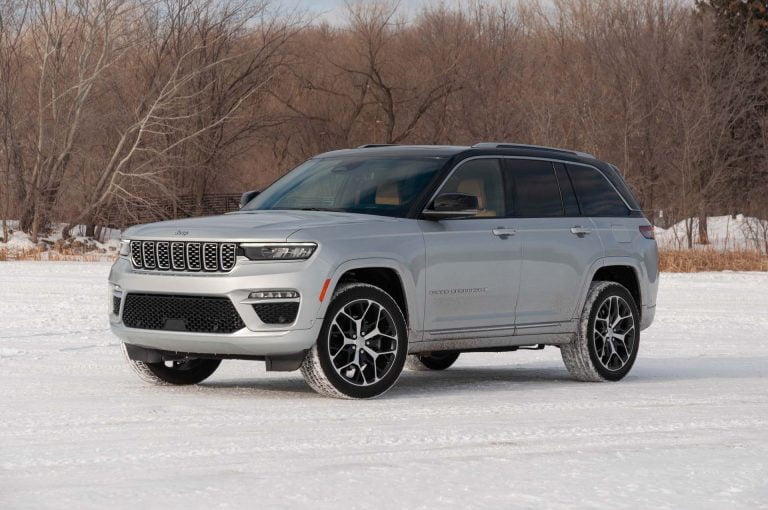How Does the Jeep Start-Stop System Function? Demystifying the Technology
Have you ever wondered what makes your Jeep vehicle more fuel-efficient and environmentally friendly?
Look no further than the Jeep Start Stop System.
This innovative technology automatically stops the engine when your vehicle is at a standstill, then seamlessly restarts it when you release the brake pedal.
But is it all sunshine and rainbows, or does this system come with its own set of concerns?
Let’s dive into the world of the Jeep Start Stop System to uncover its features, benefits, and potential drawbacks.
what is jeep start stop system
The Jeep Start Stop System is an automatic feature in Jeep vehicles that shuts off the engine when the vehicle is stationary and restarts it when the driver releases the brake pedal.
This system helps to reduce CO2 emissions and fuel consumption by cutting out the engine during low throttle loads, coasting downhill, or when decelerating from higher speeds.
It can be activated automatically or manually deactivated by pressing a button.
This system is similar to those found in other car brands, such as Volkswagen, Volvo, and Mitsubishi, and aims to provide a more fuel-efficient driving experience.
Key Points:
- Jeep Start Stop System automatically turns off the engine when the vehicle is stationary and restarts it when the brake pedal is released.
- It reduces CO2 emissions and fuel consumption by cutting out the engine during low throttle loads, coasting downhill, or decelerating from higher speeds.
- The system can be activated automatically or manually deactivated using a button.
- It is a common feature in other car brands like Volkswagen, Volvo, and Mitsubishi.
- The purpose of the system is to provide a more fuel-efficient driving experience.
- The goal is to reduce emissions and save fuel during various driving conditions.
Check this out:
💡 Did You Know?
1. The Start-Stop system in a Jeep is designed to automatically turn off the engine when the vehicle comes to a complete stop, such as at a traffic light or in heavy traffic. This helps to conserve fuel, reduce emissions, and minimize noise pollution.
2. The Jeep Start-Stop system uses various sensors, including ones that detect the brake pedal position, battery voltage, accelerator pedal position, and engine temperature, to determine when to shut off and restart the engine.
3. One interesting feature of the Jeep Start-Stop system is the ability to override it. If the driver wants to keep the engine running, they can simply press the accelerator pedal slightly, and the engine will remain active.
4. The Start-Stop system in a Jeep also includes a smart battery sensor that monitors the battery’s condition and automatically adjusts the engine’s stop/start cycle to ensure optimal battery charging and longevity.
5. While the Jeep Start-Stop system is primarily aimed at improving fuel efficiency and reducing emissions, it also provides added convenience. With the system engaged, drivers no longer need to manually turn the engine off and on when coming to a stop, as the Jeep takes care of it automatically.
1. Introduction To Jeep Start Stop System
The Jeep Start Stop System is an innovative technology that automatically shuts off the engine when the vehicle comes to a stop and restarts it when the driver releases the brake pedal. This system is designed to enhance fuel efficiency and reduce CO2 emissions by minimizing idling time. The start-stop system is widely used in modern cars to help meet stringent environmental regulations and improve overall fuel economy.
2. Similar Systems In Other Car Models
While the Jeep Start Stop System is unique to Jeep vehicles, similar systems can be found in other car models as well.
Volkswagen offers the Bluemotion Technology package in certain models, which includes a start-stop system.
Volvo also introduced their Start/Stop technology back in 2009, aimed at reducing fuel consumption and emissions during periods of idling.
Furthermore, Mitsubishi has been marketing their AS&G (Auto Stop & Go) system since 1999, which is another variation of the start-stop system.
Bullet point: Similar start-stop systems can be found in other car models such as Volkswagen, Volvo, and Mitsubishi.
- Bullet point: These systems aim to reduce fuel consumption and emissions during periods of idling.
- Bullet point: The Volkswagen Bluemotion Technology package, Volvo Start/Stop technology, and Mitsubishi AS&G system are examples of such systems.
3. Volvo’S Start/Stop Technology
Volvo’s Start/Stop technology is an invaluable addition to their vehicles. It operates by automatically shutting off the engine when the car is stationary, for example, at a traffic signal or in congested traffic. When the driver releases the brake pedal, the engine promptly reignites, ensuring uninterrupted acceleration and seamless travel. This intelligent system offers several benefits:
- Reduced fuel consumption: By turning off the engine during idle periods, Start/Stop technology conserves fuel, ultimately leading to cost savings for drivers.
- Lower emissions: This technology significantly contributes to reducing harmful emissions, making Volvo vehicles more environmentally friendly.
- Enhanced driving experience: By eliminating unnecessary idling, the system provides a smoother and more enjoyable driving experience for Volvo owners.
In short, Volvo’s Start/Stop technology stands out with its ability to save fuel, decrease emissions, and offer a seamless driving experience.
4. Mitsubishi’S As&G System
Mitsubishi’s AS&G (Auto Stop & Go) system, introduced in 1999, enhances fuel efficiency and reduces emissions. The system shuts off the engine when the vehicle is at a standstill, like at a red light or in traffic, and quickly restarts it when the brake pedal is released. By minimizing idling time, the AS&G system conserves fuel, reduces emissions, and protects the environment, all while providing a comfortable ride for the driver and passengers.
5. Concerns And Drawbacks Of Start-Stop Systems
Although start-stop systems provide numerous benefits, there are also some concerns and drawbacks associated with their implementation.
- One concern is the potential delay in power delivery for non-hybrid vehicles when the engine restarts after being shut off.
- Additionally, frequent restarting of the engine may cause additional wear on certain engine components.
However, car manufacturers have addressed these concerns through the use of improved technology and engineering solutions.
In conclusion, start-stop systems have their advantages but do come with a few drawbacks. Nevertheless, car manufacturers have implemented advancements to mitigate these concerns.
6. Variations In Start-Stop System Designs
There are various designs and implementations of start-stop systems in different car models. Some start-stop systems do not utilize a starter motor, as the engine can be restarted using alternative methods such as the alternator or the electric drive motor in hybrid vehicles. These variations in design allow for flexibility and customization based on the specific needs and requirements of the vehicle.
7. Consumer Frustrations With Auto Stop-Start Feature
The auto stop-start feature has caused frustrations and inconvenience to some drivers. Car manufacturers like Suzuki have designed their vehicles with one lithium-ion battery inside the car to support the auto stop-start feature. Consumers often find it frustrating to press the auto stop-start button every time they start their car. However, it is worth noting that the default position of the auto stop-start button is “on,” enabling consumers to choose whether to use the feature or not.
8. Environmental Benefits And Incentives For Start-Stop Systems
Start-stop systems have significant environmental benefits and are favored by regulatory agencies such as the Environmental Protection Agency (EPA). By reducing idling time, these systems contribute to the reduction of CO2 emissions and fuel consumption.
In recognition of this, the EPA provides gas mileage rating incentives to car manufacturers who implement and keep the auto stop-start system active. These incentives encourage the widespread adoption of start-stop systems and further promote fuel efficiency and environmental sustainability in the automotive industry.
- Start-stop systems have environmental benefits
- They reduce CO2 emissions and fuel consumption
- The EPA supports and incentivizes the use of these systems
- Gas mileage rating incentives are provided
- Fuel efficiency and environmental sustainability are promoted in the automotive industry
“By reducing idling time, start-stop systems contribute to the reduction of CO2 emissions and fuel consumption.”
FAQ
What are the disadvantages of start-stop technology?
One disadvantage of start-stop technology is that it may increase wear and tear on certain engine components. The frequent stopping and starting of the engine can put additional stress on the starter motor, ignition system, and other related parts, potentially leading to increased maintenance and repair costs over time. Another drawback is that some drivers may find the start-stop feature to be inconvenient or annoying, particularly in heavy traffic situations where they constantly have to restart the engine. This can lead to a less enjoyable driving experience for those who prefer a more continuous and uninterrupted flow of engine power.
What is the purpose of the start-stop system?
The purpose of the start-stop system is to minimize fuel consumption and emissions by automatically shutting down and restarting the internal combustion engine when the vehicle is not in motion. This system aims to reduce the amount of time the engine spends idling, which in turn reduces fuel consumption and decreases the release of harmful emissions into the environment. By intelligently managing the engine’s operation, the start-stop system contributes to making vehicles more environmentally friendly and improving overall fuel efficiency.
Should I disable my start-stop?
Having the option to disable auto start-stop is essential, especially when facing situations where every split-second matters. For drivers who frequently encounter junctions and turns where a slight delay could lead to a collision, disabling start-stop becomes a wise decision. By deactivating this feature, drivers can ensure maximum control and safety during these critical moments, alleviating the potential dangers associated with auto start-stop’s hesitation.
Does a stop-start function drain the battery?
The stop-start function in vehicles can indeed drain the battery due to the increased frequency of engine starts. As vehicles equipped with stop-start systems require 5 to 10 times more engine starts compared to traditional vehicles, this places significant strain on the battery. The continuous cycle of starting and stopping the engine puts a considerable burden on the battery’s capacity, potentially leading to reduced battery life and the need for more frequent replacements. Therefore, while stop-start technology offers its benefits in terms of fuel efficiency and reduced emissions, it is essential to acknowledge that it can have a negative impact on the vehicle’s battery health.



